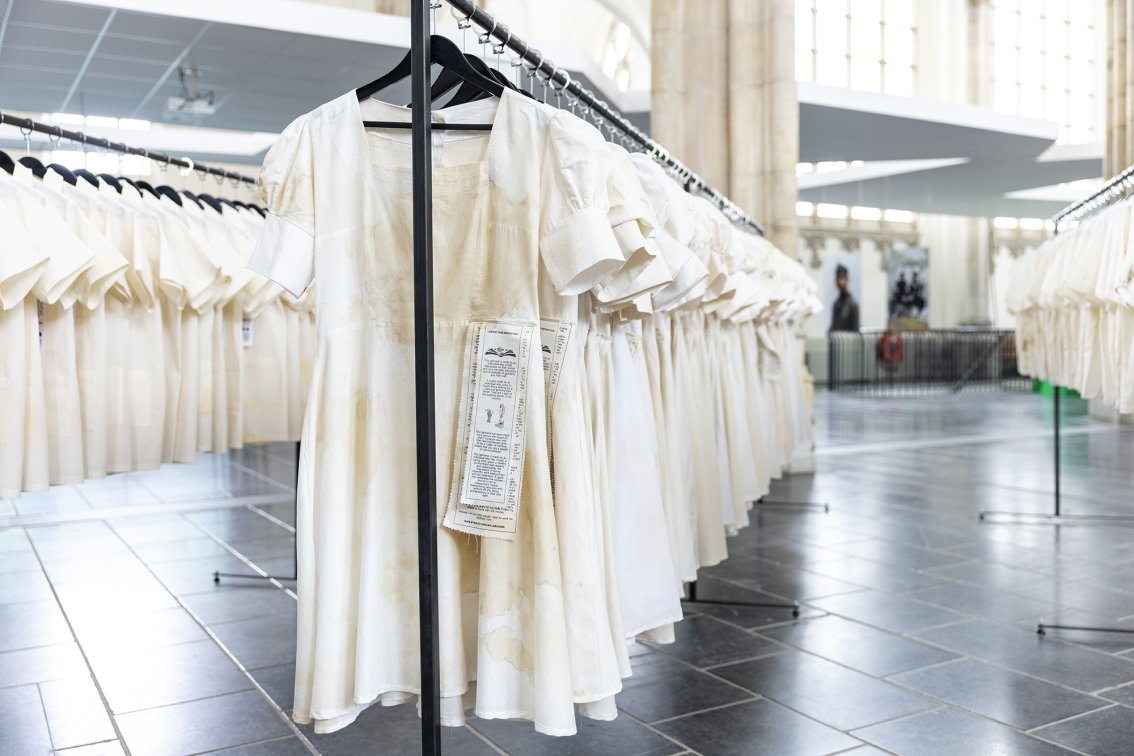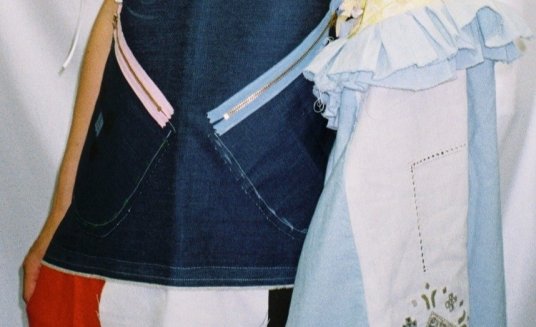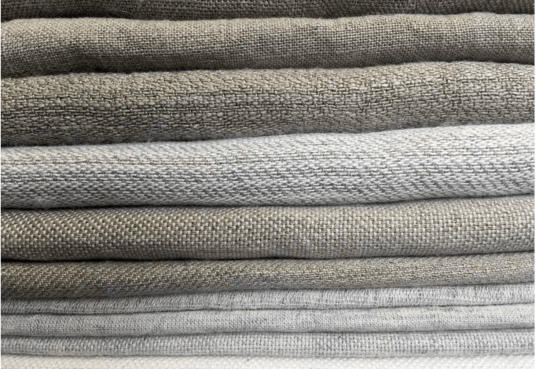The Future of Living Materials
- Partner(s): Wageningen University & Research, State of Fashion, Tjeerd Veenhoven, Lilian van Daal, Aliki van der Kruijs, Laura Luchtman & Ilfa Siebenhaar (Living Colour), Luc Aarts, Emma van der Leest, Aniela Hoitink, Iris Houthoff, Nienke Hoogvliet, Karin Vlug
- Financier(s): Stichting DOEN / Bank Giro Loterij Fonds
- Started in: January 2017
- Finished in: December 2019
Bringing together, art, design and science, The Future of Living Materials was a design- driven research project into (the development of) ‘living materials’ (e.g. bio-based materials, textiles grown by micro-organisms) and its aesthetic, bodily, communicative implications – as well as its implications for the transition to a sustainable fashion system and a circular society.

We connected fashion and product designers engaged in artistic research and design-driven research, to scientists and master students at Wageningen University & Research (WUR). In different lab projects they jointly developed new, sustainable materials – also to re-imagine fashion and textiles as a new materialist aesthetics.
The interaction between the creative, conceptual and aesthetic approach of designers and the fundamental scientific knowledge on sustainable materials of WUR was essential in developing new materials, insights and practices of making.
This project investigates and develops new ‘living’ materials such as bacteria and mycelium (mushroom spores) for the transition to a sustainable fashion system. The project links up designers with scientists and MA students from Wageningen University & Research. The project has five sub-projects.
Sub-projects
Living Systems
In nature we can find resources, (living) materials and diverse functional principles that may help the transition to a sustainable fashion industry. Mimicking biological shapes, processes and systems can be a way to contribute to a sustainable, circular future.
Living Colors
In order to achieve a form of ‘aesthetic sustainability’, this sub-project focuses on the circular life of color, and specifically: the possibilities of a new color palette development by biodesign (eg color of micro-organisms) and upcycling dyes and residual ink.
Living Leather
Research into new materials (eg fruit waste) that can take over the function of leather as a future alternative to the highly problematic leather industry and the many leather accessories in the fashion industry.
Living Skin
Living Skin focuses on the ‘behavior’ of new materials such as mycelium, kombucha and algae when worn on the skin of the human body, and on the personalization of these materials.
Living Waste
People produce large quantities of waste from which new raw materials can be made. For example, cellulose can be extracted from agricultural and industrial waste for the production of naturally degradable yarns or filaments for 3D printing. Bone waste from the meat industry has been used for centuries for a high quality of ceramic production.
Application
Project The Future of Living Materials formed the basis for a major NWA-ORC application, funded by Netherlands Organisation for Scientific Research NWO, for the development of a new textile based on a mycelium composite. This is a request for 4-year research by ArtEZ in collaboration with TUDelft, Utrecht University, Groningen Universities, Wageningen University & Research, Saxion and The Hague University of Applied Sciences, fashion and textile designers and various companies and network organisations in which the cultivation, processing, design and use of a mycelium textile is investigated.
Project management: Daniëlle Bruggeman, Jeroen van den Eijnde
Researchers: Luc Aarts, Lilian van Daal, Aniela Hoitink, Iris Houthoff, Nienke Hoogvliet, Aliki van der Kruijs, Emma van der Leest, Laura Luchtman & Ilfa Siebenhaar, Tjeerd Veenhoven, Karin Vlug.
Budget: € 105.000,-


